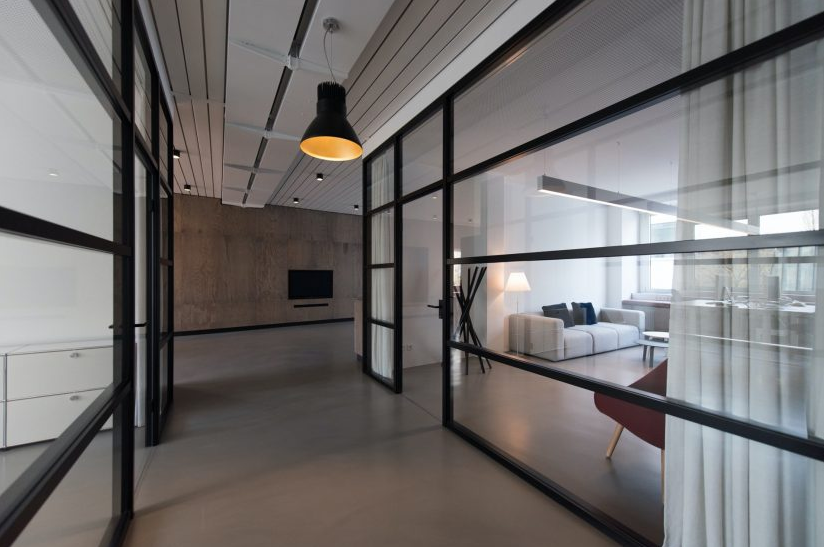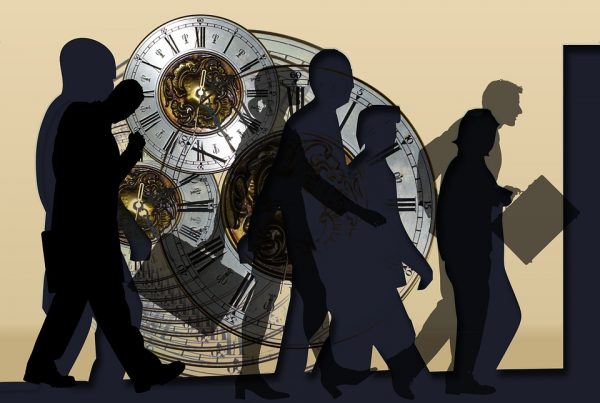COVID-19 Safe Spaces are critical for reopening of facilities
The COVID-19 pandemic has dramatically changed how and where work is done. The overnight shift to remote working resulted in empty office buildings, business campuses and commercial districts. As COVID-19 vaccines are administered to the community, business and community leaders are planning “return to office” initiatives. Despite the vaccine, COVID-19 isn’t going away and many people are concerned about returning to in-person activities. In Part One, we introduced the concept of a COVID-19 safe space for reducing health risks associated with in-person activities. In Part Two, we discuss the role of technology in facilitating and contributing to the operation of a COVID-19 safe space. We highlight key considerations for the use, selection and investment of technologies for safe spaces.
The roles of technology in COVID-19 Safe Spaces
Technology is a critical component of the COVID-19 safe space. It prevents infection risks from entering the safe space, protects its occupants, mitigates the effect of potential exposure events, responds effectively to detected incidents, and facilitates the recovery of the workspace to a usable state after any incidents.
Technology is used alongside other enablers to make a space safe (Figure One). It informs, simplifies, automates, enforces policies and practices for consistent, reliable and continuous day-to-day execution. For example, all workspaces have mandates and policies around the wearing of face masks. Camera based systems monitor and automatically detect the wearing of face masks by occupants in a workspace.
Non-compliance incidents are detected and reported to management. Areas with high levels of non-compliances are subjected to corrective actions, such as placement of signs, additional communications and training, and active reinforcement.
Analytics from non-compliance incidents is used to proactively and predictively inform management on which areas are likely to require intervention across the facilities.
Management dashboards, integrated to various technology systems, continuously report the safe space performance of the facilities and allow for agile responses to incidents.

Figure One. The ten building blocks of a COVID-19 Safe Space
The Use of IoT in COVID-19 Safe Spaces
There is no one technology that makes a space safe. A variety of technologies, working in tandem, is used in safe spaces, ranging from software, digital signage, to sensors and analytics. These technologies are used in a variety of ways and serve different purposes (Figure Two).

Figure Two. Use of Technology in a COVID-19 Safe Space
The Internet of Things (IoT) technologies, with its sensors, data collection and analytics, bring unique capabilities to a COVID-19 Safe Space. Networked sensors detect, monitor and track exposure “vectors” and events. Analytics and AI enable patterns and connections to be seen that would miss the unaided human eye and enable predictions to be made that drive pre-emption rather than mere reaction. They also readily enable combinations of IoT data with external data sources for deeper analyses. Finally, when sensors and data are combined with constructs such as digital twins, interactions between the disease and other systems to be modeled with live data – for example the impact of building routes on disease spread, in order to provide an agile near real time response.
Key applications of IoT in a COVID-19 Safe Space include:
- CO2 sensors. Good indoor air quality (IAQ) is a necessity in a Safe Space. A properly designed and operating ventilation system can mitigate the risks of indoor COVID-19 exposure. Proper ventilation, airflow patterns, and the Number of Air Changes per Hour (ACH), temperature and relative humidity (RH) levels, are indicators of IAQ. Carbon dioxide (CO2) sensors provide an indication of the ventilation sufficiency of a space. High CO2 levels indicate that the ventilation system is not moving the air out fast enough in a space.
- Computer vision/camera systems. Computer Vision technologies monitor social distancing, face mask compliance, indoor transit patterns, occupant gathering sizes and time, and other behaviors. When combined with artificial intelligence (AI), these systems can automatically recognize, report and track non-compliance incidents. Spaces where numerous people continuously cross paths or possibly linger like a cafeteria, a lobby, gathering spaces, or open areas within an office, and would need constant supervision are ideal applications.
- Personnel health screening. Many facilities now require a body temperature scan for entry. Body temperature measurement solutions range from handheld temperature scanners to camera based temperature detection systems. The latter can be integrated into a kiosk or a smartphone app, where it can be combined with a pre-entry health screening questionnaire. If any risk conditions are flagged, staff is notified and the visitor is denied entry.
- Occupancy and crowd sensing. Distancing and face masks are two of the most important countermeasures to COVID-19 transmission. Gathering areas, such as work areas and conference rooms, limit the number of people present to maximize distancing. Occupancy sensors are simple digital people counters. They can be installed at a turn style or doorway (overhead) to keep a running total of how many people enter and exit a facility or a room. This information can be tracked and reported in real time for any non-compliance incidents.
- Location analytics. Location analytics, using WiFi or Bluetooth sensors, in smart phones, wearables and badge cards, track movements of people in a building or campus to understand mobility and gathering patterns. Location analytics can indicate at an aggregate level, where people came from, where they went, when they were there , and how long. Identified high risk locations and patterns are targets for pre-emptive intervention.
- Touchless control applications. Avoidance of high touch surfaces helps to limit virus transmission. Sensors on faucets, light switches, and doors eliminate hand contact. Voice control systems can automate pre-COVID-19 high touch manual processes in public areas such as opening doors, selecting floors on elevators, dialing phone numbers or even typing on keyboards.
- Contact tracing applications. This is a tedious and manual process that can be augmented with the select use of IoT technology. Bluetooth technologies, in badges, wearables and smart phones of building occupants, can detect and record when they come into contact with bluetooth devices of other occupants. The who, when, and duration of that contact is stored on the device and is only retrieved upon notification of a potential exposure incident. Contact tracing applications have their limitations, and do not eliminate the manual tracing efforts. However, they do contribute to a more agile response inside a Safe Space.
- Robots. The use of robots can simplify the repetitive tasks of monitoring large facilities and spaces. Robots can be equipped with a variety of sensors, including cameras, occupancy sensors and bluetooth receivers, to detect unsafe behaviors and non-compliance incidents. Other robots can be equipped with Ultraviolet-C (UVC) lamps and sanitizing sprayers to conduct routine cleaning of high risk areas, or to respond after an exposure incident. These are fairly expensive, but indispensable for large high risk areas.
COVID-19 Safe Space Technology considerations
There are many basic and advanced technologies in the marketplace that can be used in a COVID-19 safe space. However, some of them are good investments in some cases, while poor choices in other scenarios. Who owns, manages and operates the safe space technologies is also another important consideration. In light of these considerations, COVID-19 safe space planners, designers and operators must evaluate a number of factors. These include:
Use Case. What is the use case and business justification for using Safe Space technology? Key questions include:
- What is this space used for, by whom, and how often?
- What are the specific transmission and exposure risks for this space? How likely are they given the characteristics of the space, its occupants, frequency of use and activities?
- Can these risks be accurately, effectively and economically addressed with manual resources? Are there resources available over the desired period of time? What is the possibility that people can make errors? What are the consequences of these errors from a liability and compliance perspective?
- Is there technology that can be better used to mitigate specific risks?
- What is the Return on investment (ROI), or value for the money between the various technologies?
- Which technology should I spend it on?
Operations and Maintenance. Who and what is required to maintain and operate these technologies? What resources are required? These technologies blur the line between IT, operations and facilities. Key questions are:
- What infrastructure is required to support the technology?
- Will the solution be required to integrate into the company’s information systems?
- Who will manage and operate the technologies? What budget is required and who owns it?
- Who is responsible for ensuring the technology is compliant with the latest guidelines and regulations?
- Will technologies be provided by building owners or facilities management groups and would there be compliance requirements by the tenant organization?
Technology Considerations. Key questions include:
- Is the technology purpose built, or can it be reused for other applications beyond Safe Spaces?
- Is the technology part of an overall building infrastructure, resilience technology roadmap, or is it a one-time use solution to be discarded after COVID-19?
- Obsolescence of the need – long term or short term? Can the core investment be reused for a “next pandemic” incident at any time in the future?
- What are the privacy implications arising from the use of the Safe Spaces technology?
- Will the technology be integrated into other systems, such as building information management, building automation systems or HVAC systems? What technology infrastructure is needed to integrate, operate and support the solution? What is required for the Safe Space technology to interoperate with other systems and devices?
- What cybersecurity infrastructure is required to ensure safe operation of the solution?
- What will you do with the data and how do you keep it safe? What regulations, such as GDPR, is the data subjected to?
Summary
COVID-19 Safe Spaces are key to reopening buildings and facilities for in-person activities. Technology is a critical component of the COVID-19 safe space. It prevents infection risks from entering the safe space, protects its occupants, mitigates the effect of potential exposure events, responds effectively to detected incidents, and facilitates the recovery of the workspace to a usable state after any incidents.
There is no one technology that makes a space safe. A variety of technologies, working in tandem, is used in safe spaces, ranging from software, digital signage, to sensors and analytics. However, some of them make good investments in some cases, while poor choices in other Safe Spaces scenarios. Who owns, manages and operates the COVID-19 safe space technologies is also another important consideration. Finally, technology, integration, interoperability, data usage and cybersecurity issues must be examined as part of the consideration process.
This concludes Part Two. In Part Three (coming soon), we examine several technologies, its capabilities and usage, and some pros and cons of using those technologies within a COVID-19 Safe Space.
Credits
This blog was a collaborative effort and co-authored with the following:
Benson Chan, Senior Partner, Strategy of Things
Craig Stark, Managing Director, Strategy of Things Canada
Thanks for reading this post. If you found this post useful, please share it with your network. Please subscribe to our newsletter and be notified of new blog articles we will be posting. You can also follow us on Twitter (@strategythings), LinkedIn or Facebook.




